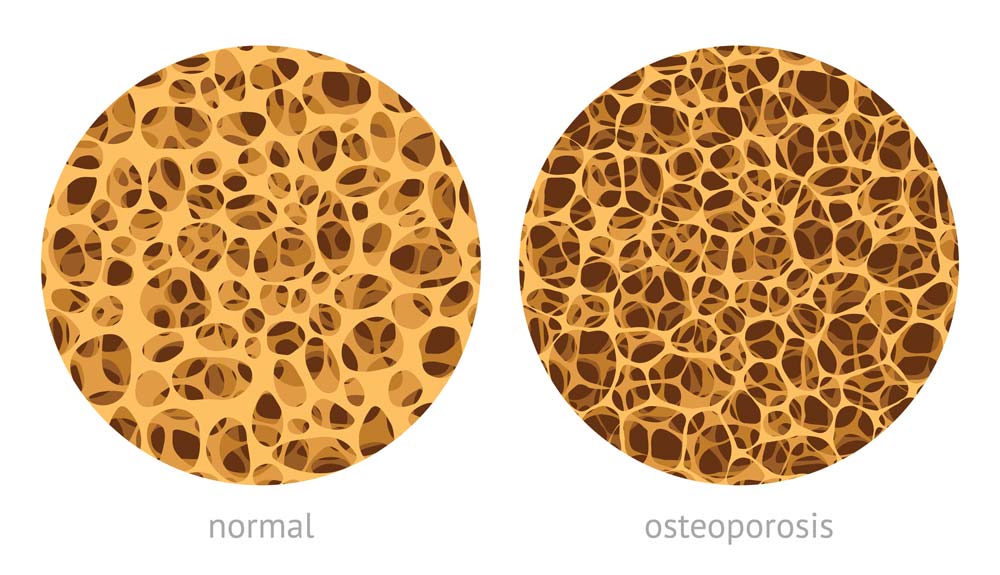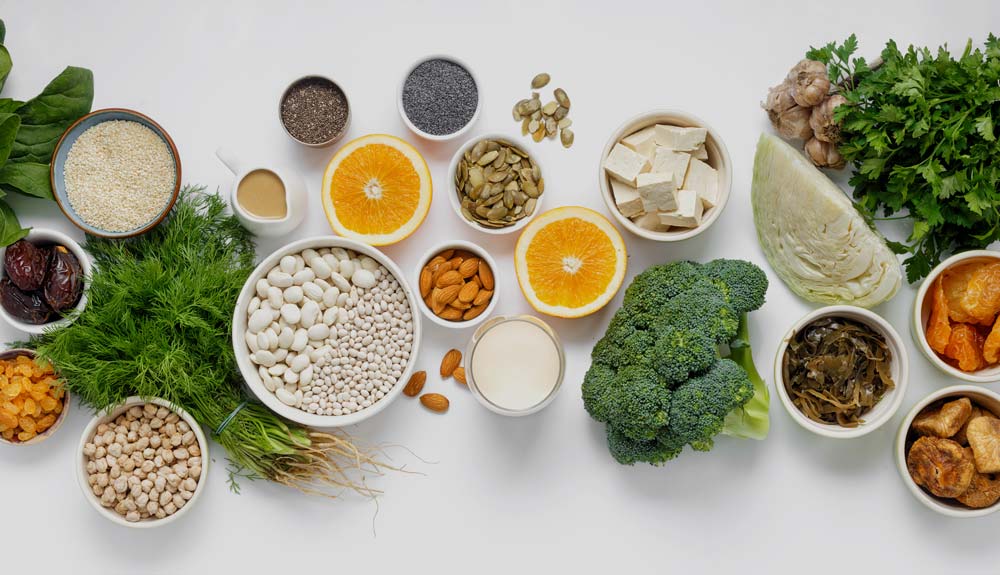Osteoporosis is a debilitating disease that affects 44 million Americans or more than half of women 50 years of age and older. Characterized by fragile, porous bones that break easily, this disease can be treated and even prevented. The National Osteoporosis Foundation (NOF) has designated May as National Osteoporosis Awareness Month and the Illinois Department of Public Health wants to observe this month by sharing some information about the disease.

What is Osteoporosis?
Osteoporosis, or porous bone, is a condition in which bones become weak and can break easily. Bone is formed up to the age of about 30, making childhood and teenage years the most critical for building bone mass. Girls who reach optimal bone mass during these years are less likely to develop this disease. After age 30, the body begins to break bone down faster than it replenishes it. This is particularly true for women after the onset of menopause. To determine your risk, ask your doctor about getting a bone mineral density test. This is a painless, non-invasive test that accurately detects osteoporosis before a bone breaks.
Who is at risk for osteoporosis?
Certain people are more likely to develop osteoporosis than others. Factors that increase the likelihood of developing osteoporosis include being female; of an older age; having a family or personal history of broken bones; being small-boned or thin; being Caucasian, Asian or Hispanic/Latino; smoking; abusing alcohol; leading an inactive lifestyle; having low sex hormones; eating a diet low in calcium and Vitamin D; the use of certain medications; and having certain diseases or conditions.
How can osteoporosis be prevented?
Building strong bones during childhood and adolescence can optimize bone health and help prevent osteoporosis later in life. According to the National Osteoporosis Foundation, there are five steps which, when taken together, can optimize bone health and help prevent osteoporosis.
- Get the daily recommended amounts of calcium and vitamin D.
- Engage in regular weight-bearing and muscle-strengthening exercise.
- Avoid smoking and excessive alcohol.
- Talk to your health care provider about bone health.
- Have a bone density test and take medication when appropriate.

Increase Your Intake of Calcium
Calcium is essential to developing and maintaining bone strength and plays an important part in preventing osteoporosis. Calcium requirements recommended by the National Institutes of Health are:
| Age Group | Milligrams Per Day |
|---|---|
| Birth - 6 months | 400 |
| 6 months - 1 year | 600 |
| 1 to 5 years | 800 |
| 6 to 10 years | 800 - 1,200 |
| 11 to 24 years | 200 - 1,500 |
| Women aged 25 to 50 years | 1,000 |
| Women, pregnant or nursing | 1,200 - 1,500 |
| Postmenopausal women (50-65) | 1,500 (1,000 if taking estrogen) |
| Women older than 65 years | 1,500 |
Simple Ways to Boost Your Calcium Intake:
Breakfast: Drink a glass of calcium-fortified orange juice, toss low-fat cheese in an omelet, make a smoothie with skim milk and low-fat yogurt, add low-fat milk instead of water to oatmeal and other hot cereal, or pour soy milk into your cereal.
Lunch: Add low-fat shredded cheese to a salad or soup, top a sandwich (made with calcium-fortified bread) with low-fat cheese slices, or add low-fat milk instead of water to creamed soups.
Dinner: Make a salad with dark green leafy vegetables, such as spinach, top salads soups and stews with low-fat shredded cheese, add tofu made with calcium to stir fry and other dishes, or make macaroni and cheese with low-fat cheese and whole-wheat pasta.
Snacks: Enjoy frozen yogurt, dip fruits and vegetables into yogurt, have low-fat cheese with crackers, eat pudding made with skim milk or soy milk, or eat low-fat string cheese.
While adequate calcium intake plays a key role in preventing osteoporosis, do not forget to incorporate vitamin D. Adults younger than age 50 need 400 to 800 IU of vitamin D3 daily, and adults 50 and older need 800 to 1,000 IU of Vitamin D3. Vitamin D also can be found in fortified milk, egg yolks, saltwater fish, liver and supplements.
Engage in Weight-Bearing Physical Activity
- Walking, jogging or running
- Tennis or racquetball
- Field hockey
- Stair climbing
- Jumping rope
- Basketball
- Dancing
- Hiking
- Soccer
- Weight lifting
In the News
The World Health Organization has created an online tool to calculate long-term risk of hip fracture or other major bone breaks. The new Fracture Risk Assessment (FRAX) tool takes into account bone density as well as nine specific risk factors, such as smoking, alcohol use and family history. The information is entered into a computer and produces an algorithm which estimates the likelihood of a person to break a bone due to low bone mass or osteoporosis over a 10-year period.
The National Osteoporosis Foundation released its new Clinician’s Guide to Prevention and Treatment of Osteoporosis representing a major breakthrough in the way health care providers evaluate and treat people with low bone mass or osteoporosis and the risk of fractures. The new guide introduces guidelines beyond Caucasian postmenopausal women to include African-American, Asian, Latina and other postmenopausal women. The new guide applies the recently released FRAX tool (see previous news story).
Resources
The Alliance for Aging Research has developed a new resource to educate women about osteoporosis, also known as porous bone disease. The “Standing Strong” toolkit includes a leader’s guide, an educational video and patient brochures and is designed to assist community groups in hosting workshops to educate older adults about the disease. The materials focus on effective communication between women and their health care professionals as a key factor in improving prevention, diagnosis and treatment of osteoporosis. For more information or to order a toolkit, visit www.agingresearch.org.
The National Institutes of Health, Osteoporosis and Related Bone Diseases National Resource Center has developed a bilingual storybook entitled “Isabel’s Story: How She and Her Family Learned About Osteoporosis and Bone Health.” The publication is designed to educate women and their families about the importance of bone health and osteoporosis prevention. The storybook is available in an English/Spanish back-to-back flip format. To order free copies, contact 800-624-2663.
Statistics
- 10 million Americans are estimated to have osteoporosis: 8 million are women and 2 million are men.
- In the United States, 10 million individuals are estimated to already have the disease and almost 34 million more are estimated to have low bone mass, placing them at increased risk for osteoporosis.
- In 2005, osteoporosis-related fractures were responsible for an estimated $19 billion in costs.
- By 2025, experts predict that these costs will rise to approximately $25.3 billion.
- Osteoporosis was responsible for more than 2 million fractures in 2005.
Source: National Osteoporosis Foundation; CDC
